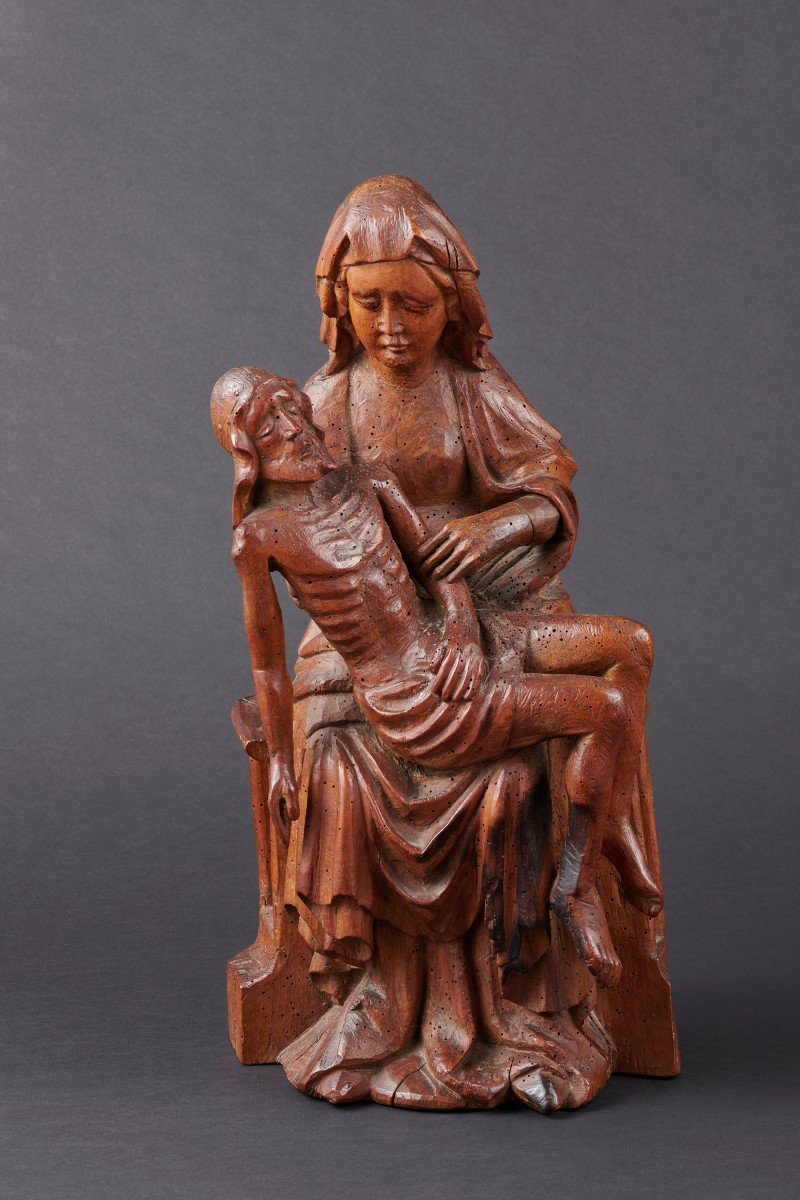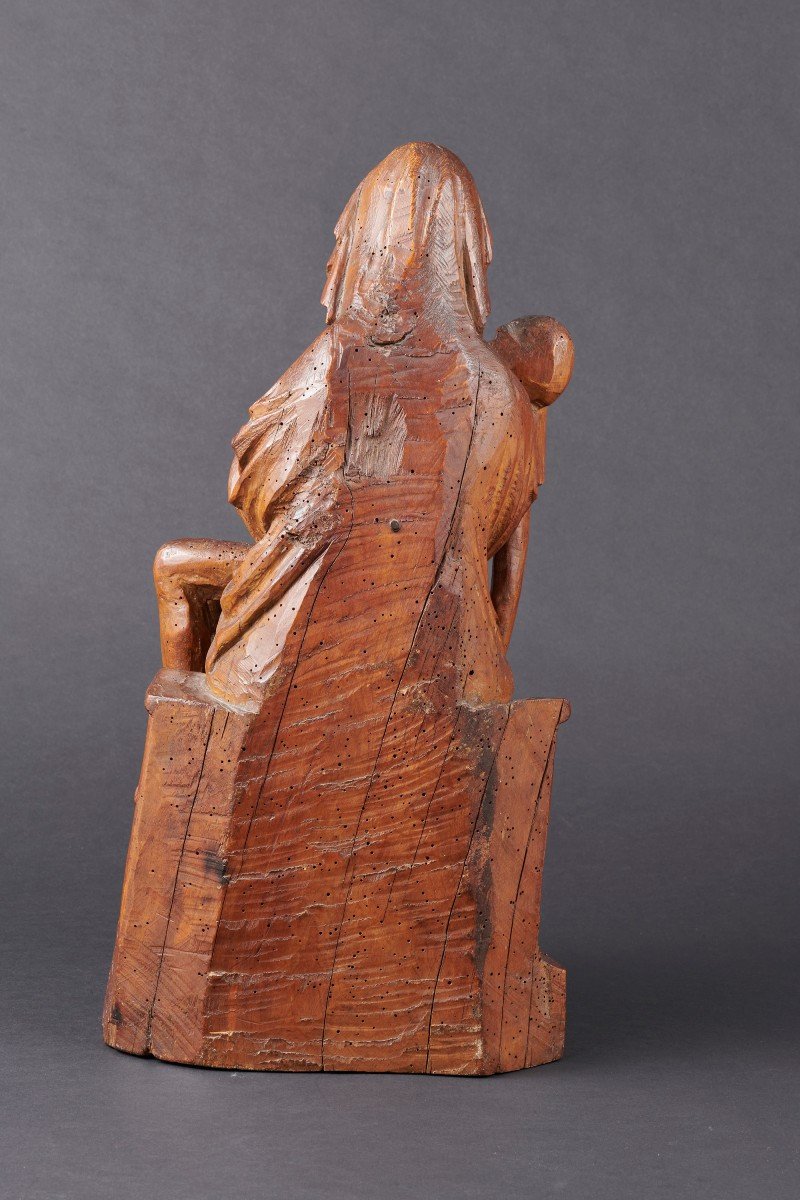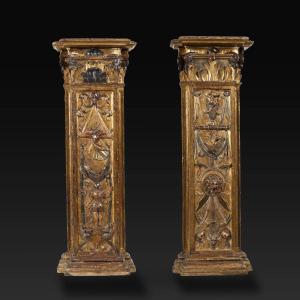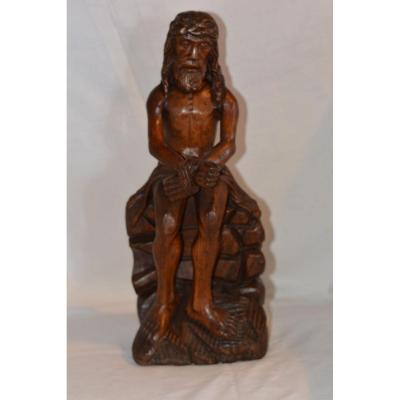This moving Pietà shows the Virgin carrying the lifeless body of her son on her knees. In Germany this type of work is known as "vesperbilds" because of their integration into the liturgy at the time of evening prayer (vespers).
Like many other devotional images produced in southern Germany and Austria in the 15th century, this sculpture encourages the faithful to contemplate the sufferings of Christ and the Virgin and to draw closer to him through empathy. It thus participates in the phenomenon of Devotio moderna, a vast movement of spiritual renewal which, at the end of the Middle Ages, develops and advocates a more affective vision of Christian life.
From a formal point of view, our work can be linked to the corpus of Pietas produced in Salzburg in the years 1420-1430.
The dramatic power instilled in our group as well as its refined character are echoed in an Austrian Pietà dated around 1420 now kept at the Harvard Art Museum (59.95 BR). The rendering of the skeletal and painful anatomy of Christ is very similar to that of our sculpture, as are the fluid and abundant draperies which cascade down the Virgin's legs, wrapping around themselves. The same system is implemented on the veil that borders Mary's face, where the interiorized distress of the mother supporting the inert body of her son can be read. This finds its perfect echo in a Salzburg pietà sold at Sotheby's on December 21, 2005, comparable in all points to our sculpture. The stylistic characteristics noted above constitute the Bohemian and Germanic version of international Gothic art which then flourished in European courts.




































 Le Magazine de PROANTIC
Le Magazine de PROANTIC TRÉSORS Magazine
TRÉSORS Magazine Rivista Artiquariato
Rivista Artiquariato